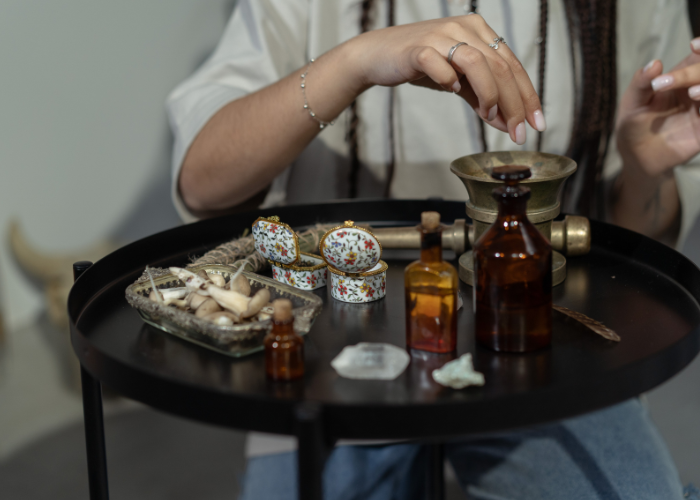Voodoo, also known as Vodou or Vodun, is an ancient African religion and system of folk magic that originated in the region now known as Benin and Togo. It is also practiced in Haiti, New Orleans, and other parts of the world where African diaspora communities exist. Voodoo is often misunderstood and associated with black magic or harmful rituals, but in reality, it is a complex and diverse belief system with a rich cultural heritage. In this article, we will explore what voodoo is and shed light on its various aspects.
The Origins and Beliefs of Voodoo
Voodoo has its roots in West African Vodun, which was brought to the Americas during the era of the transatlantic slave trade. The religion is a fusion of traditional West African beliefs and practices, as well as elements of Catholicism and other indigenous beliefs encountered in the New World.
Central to voodoo is the belief in a supreme being or creator, often referred to as Bondye or Gran Met. This supreme being is seen as distant and less involved in the daily affairs of humans. Instead, voodoo practitioners believe in various deities, spirits, and ancestors who can be petitioned for assistance, guidance, and protection. These spirits, known as lwa or loa, are believed to have direct influence over the human realm and can be called upon through rituals and ceremonies.
Rituals and Ceremonies
Voodoo rituals and ceremonies play a crucial role in connecting with the spiritual world and seeking assistance from the lwa. These rituals often involve music, dance, and various forms of divination. Voodoo drumming, chanting, and dancing are vibrant and energetic, creating an intense atmosphere that allows practitioners to enter a trance-like state and commune with the spirits.
In voodoo, there is a strong emphasis on community and the power of collective energy. Rituals are often performed in groups, and individuals come together to support each other in their spiritual journeys. Voodoo ceremonies are not only religious events but also social gatherings that reinforce cultural identity and foster a sense of belonging.
Myths and Misconceptions
Voodoo has been shrouded in myths and misconceptions, largely due to its association with Hollywood movies and sensationalized media portrayals. Contrary to popular belief, voodoo is not inherently evil or witchcraft. It is a religion and a way of life for millions of people around the world.
Voodoo practitioners, often referred to as houngans (male priests) and mambos (female priests), have profound knowledge and understanding of the rituals and practices. They serve their communities as spiritual leaders, healers, and mediators between the human and spiritual realms.
The Use of Magic in Voodoo
One of the aspects that often generate intrigue and fascination is voodoo magic. Voodoo practitioners believe in the power of magic and spellcasting to influence outcomes and protect against evil spirits. However, it is important to distinguish between voodoo magic and black magic. Voodoo magic, known as gris-gris, is primarily used for healing, protection, and bringing good fortune. It involves the use of herbs, charms, talismans, and rituals to harness spiritual energies.
Contrary to popular belief, voodoo magic does not aim to harm or manipulate others. Rather, it serves as a tool to restore balance, harmony, and well-being. Voodoo practitioners believe in the interconnectedness of the spiritual and physical worlds, and magic is seen as a means to tap into this interconnected energy for positive purposes.
The Influence of Voodoo in Popular Culture
Voodoo has had a significant impact on popular culture, especially in the realm of music, art, and literature. Artists, musicians, and writers have drawn inspiration from voodoo’s rich symbolism, rituals, and beliefs to create works that capture its essence.
In music, the rhythms and sounds of voodoo drumming have influenced genres such as jazz, blues, and rock and roll. Artists like Dr. John, a New Orleans native, have incorporated voodoo themes and imagery into their music, further bridging the gap between the spiritual and artistic realms.
Voodoo has also been portrayed in various literature and films, although often sensationalized and distorted. It is crucial to approach these portrayals with a critical mindset and seek out authentic sources to gain a deeper understanding of the religion.
Conclusion:
Voodoo is a complex and diverse religion that encompasses a wide range of beliefs, rituals, and practices. It is a way of life for millions of people around the world, providing spiritual guidance, healing, and a sense of community. While it has been subject to myths and misconceptions, voodoo remains an integral part of African cultural heritage and continues to thrive in diaspora communities.
By delving into the origins, beliefs, rituals, and influence of voodoo, we gain a deeper appreciation for this ancient African religion and its significant contributions to global culture. It is essential to approach voodoo with an open mind and respect for its practitioners, recognizing that it is a religion with its own unique traditions, values, and philosophies.

